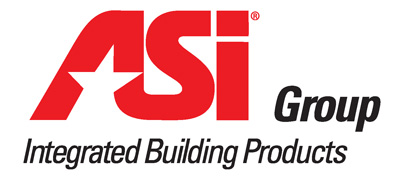Sustainable Design and the Cost of Healing
Long-term cost savings
When determining the cost of health-care, there are many things to consider. While personnel costs, medical supplies, equipment, facility expenses, etc. are often the first come to mind, most people don’t consider the hidden long-term costs that can be positively or negatively affected by building design decisions.
Specifying high-quality materials may mean higher upfront costs; however, long-term energy savings, improved patient morale, and a happier, more efficient workforce could end up saving the organization lots of money over time while also promoting a more positive environment.
Hidden costs include downtime to facilities while building renovations and expansions occur, additional shading to mitigate sun exposure, long-term energy costs from a leaky envelope or incorrectly sized HVAC system, replacement costs for materials that have short life spans, and the environmental impact of disposing of those materials.
Quick and Efficient Construction and Installation
Composite floor systems allow for efficient installation on project sites. Their longer spans can often be erected without the need for temporary shoring to hold the weight of the installation crew. A deep-ribbed composite floor can be assembled in sections on the ground then crane lifted into place to establish a working platform. Sections are then rapidly fastened together to accelerate the construction timeline, leading to earlier completion and occupancy. The approach is ideal for hospital renovations, where minimized disruption to doctor and patient performance is paramount.
Total composite floor depth is directly affected by required spans and loads, and also by the system selected. Sometimes “deeper is cheaper,” but it has become increasingly important to consider overall building height and the interrelated costs of materials and installation.
“It is about critical schedule and threading the needle of complex design requirements. This speaks to true collaboration between the design team and product manufacturer,” says Alex Therien, AIA, LEED AP, a market development manager at New Millennium Building Systems.
No Additional Mitigation Needed for Excessive Daylighting
While there are many benefits of daylighting, it is possible to have “too much of a good thing.” Direct sunlight and unwanted glare can cause discomfort, eyestrain, headaches, tension, and fatigue. For hospital workers who spend the majority of their day on a computer, this could be especially harmful and lead to discomfort and downtime.
When determining window placements, it’s important to consider building orientation and its relation to the sun year-round. As the seasons change, so does the position of the sun throughout the day. For areas in which employees will be working at computers, a good rule of thumb is that the “bright to dark” ratio between the screen or work surface and the direct field of visions should not exceed 3:1. That means the work area should be no more than three times as bright as the area immediately surrounding it.
In addition to building orientation, glazing can also provide protection against unwanted glare and prevent unwanted solar heat gain. Unfortunately, if proper materials are not specified in the initial design and installed during construction, additional costs are incurred to help pay for mitigations. Common mitigations for excessive daylighting include blackout curtains, blinds (installed either indoors or outdoors) that block all views to the outdoors, and exterior structures built to create shading.
Energy Savings
Energy efficiency is key to sustainable design in health care. This is especially true for large hospitals and medical facilities. Glass is a desired architectural element in the building envelope because of its contemporary look and because it allows ample daylight to pass through and create bright interiors that help improve patient morale. Historically however, glass fenestration systems have not been considered energy efficient because they weren’t very effective at mitigating heat transfer. The good news is that today, architects no longer have to sacrifice aesthetics for performance. “The glass entryway system strikes an ideal balance between all-glass aesthetics and energy-efficient design,” says Mark Suehiro, director of the entrances group at CRL. “It solves requirements for thermal performance and weather protection while maintaining an upscale look that complements glass facades.”
Additionally, too much daylighting can lead to unwanted solar heat gains which leads to increased load on the building’s HVAC system. While windows and HVAC systems operate independently, they are closely intertwined as part of the whole building system. In the design phase, architects must specify the correct size of the HVAC system. This is not only dependent on the size of the building but also the tightness of the building envelope. If windows are not properly sealed or glazed, unwanted heat will enter the building in summer or heat generated by the HVAC system will escape in winter. Either scenario puts extra strain on the HVAC system, which increases the overall energy costs of the building.
Too often, this problem is discovered long after the designer has completed the project, which leads to occupants implementing their own mitigations (such as shutting off the system, closing the vents, etc.) that can compromise other aspects of the building system.
Reduced Replacement and Repair Costs
The specification of more durable structural materials leads to longer-term building performance. Long-span composite floor structures combine the advantages of steel and concrete to address these performance goals. But the strength and durability of the systems also support the goal of long-term sustainability. A thin-slab floor substantially reduces the volume of concrete material. The steel deck is largely made from recycled steel, which in turn can be recycled at the end of building life.
Glass partition systems allow for versatility and the ability to change configurations as needed. Some feature 316-grade stainless steel construction that ensures structural integrity and lasting durability.
Protective wall cladding protects surfaces and can also be reinforced with chair rails and trim to further protect the walls from being damaged in high traffic areas.
Limited Downtime
At the end of a product’s lifecycle, the materials must be replaced. Material and system replacements often lead to downtime or reduced occupancy in a space. Limited space leads to limited places to treat patients. It can also lead to multiple patients having to share a small space, thus negatively affecting patient outcomes while also increasing costs and reducing revenue. By specifying durable, high-quality materials, the time between renovations and repairs is longer, thus resulting in fewer disruptions.
While the costs of renovations, materials, and construction labor are often expected and considered, there are plenty of other hidden costs not readily associated with a hospital renovation. These include time spent by staff and health-care providers planning for changes to spaces, reconfiguring rooms, and adjusting schedules to ensure all patient needs are met. When renovations are complete, hospital staff and health-care providers will have to readjust spaces and schedules again to ramp operations back up to normal.
Other unforeseen “costs” include environmental disruptions that can lead to patient discomfort. This could be from noise pollution from construction or renovation efforts and the added stress of not being in a room with proper daylighting due to space limitations. These challenges have negative impacts on patient health, safety, and welfare while also contributing to longer hospital stays.
Environmental Impact
Renovations and repairs are also notorious for creating materials waste, most of which will end up in the landfill. Even materials that can be recycled will have to be carefully disassembled from the overall system, stored, and then returned to the manufacturer for recycling. By specifying quality materials, installed systems will have a longer life, thus reducing the waste generated when materials need to be replaced or costly renovations that occur when systems break down.
End Notes
1The Effects of Natural Daylight on Length of Hospital Stay, 2018
2Wunsch, H., Gershengorn, H., Mayer, S.A. et al., 2011; The effect of window rooms on critically ill patients with subarachnoid hemorrhage admitted to intensive care. Crit Care 15, R81
3Impact of Light on Outcomes in Healthcare Settings, 2006
5Healthcare-Associated Infections (HAIs)
6Healthcare Design Gets Back to Nature
Jessica Jarrard is an independent writer and editor focusing on health, science, and technology. She contributes to continuing education courses and publications through Confluence Communications. www.confluencec.com
Notice

www.asigroup.us

www.crl-arch.com

www.inpro.com

www.newmill.com













